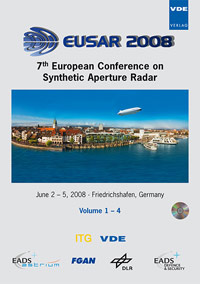STAP or Along-Track Interferometry: two different perspectives
Conference: EUSAR 2008 - 7th European Conference on Synthetic Aperture Radar
06/02/2008 - 06/05/2008 at Friedrichshafen, Germany
Proceedings: EUSAR 2008
Pages: 4Language: englishTyp: PDF
Personal VDE Members are entitled to a 10% discount on this title
Authors:
Oriot, Hélène; Cantalloube, Hubert; Vaizan, Bernard (ONERA DEMR, chemin de la Hunière, 91761 Palaiseau Cedex, France)
Abstract:
In the field of radar moving target detection, two approaches are usually used: Space Time Adaptive Processing (STAP) which is an optimal solution to point like moving target detections under gaussian clutter hypotheses and Along Track Interferometry (ATI), which is usually dedicated to measuring motion of surface elements (ocean current for instance). This paper aims at comparing the STAP point of view with a generalized along track interferometry point of view for moving target detection. First, the STAP covariance matrix is modelled using an interferometric model of the clutter. Then the improvement factor is computed for DPCA conditions and generalized to integer ratio between spatial and temporal displacement. The same model is derived for generalized interferometric processing on range-doppler images leading to a formulation close to S. Chiu formulation. Comparing the two improvement factors shows that the performances of both methods, as long as they have the same characteristics lead to similar performances for slow moving targets.


